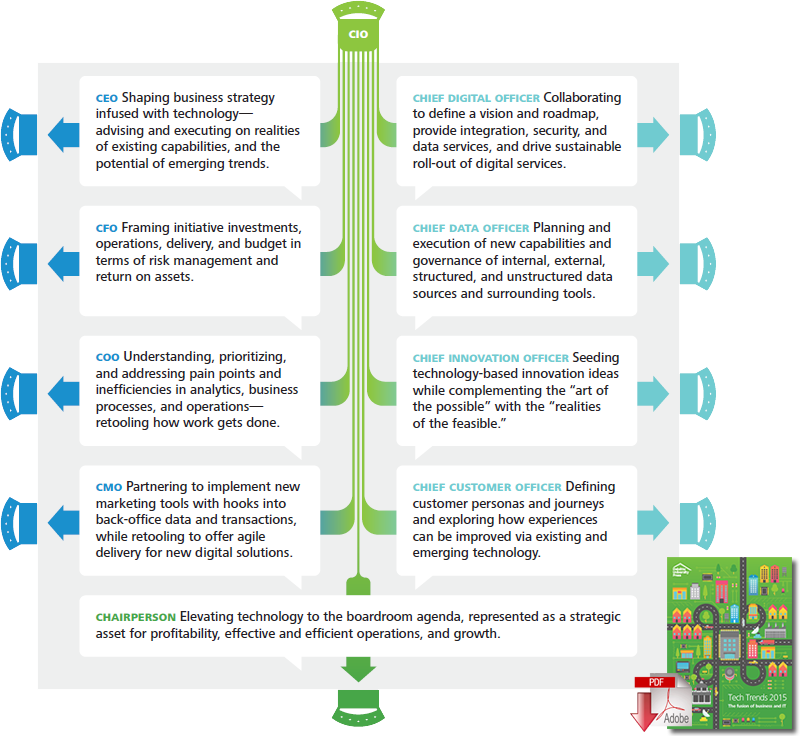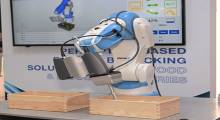We have it on good authority that the only constant in life is change.
Yet, given the magnitude of the change we witness daily and the staggering pace at which it now unfolds, the term “constant” seems inadequate as we attempt to define and understand the highly mutable world around us.
For example, 10 years ago, who could have foreseen that aircraft manufacturers would be able to “print” replacement parts onsite in hangars rather than manufacturing them on distant assembly lines? Or that doctors would harness artificial intelligence to improve cancer diagnosis and treatments? Or that preventative maintenance systems featuring sensors and robotics would virtually eliminate unanticipated mechanical breakdowns?
In many cases, such changes are being driven by a confluence of business and technology forces fueled by innovation. On the business front, globalization continues apace, with new markets and new customer tiers swollen by billions of people rising out of poverty. Barriers to market entry are collapsing as entrepreneurs with low capital investment needs challenge established market players.
Meanwhile, on the technology front, five macro forces continue to drive enormous transformation: digital, analytics, cloud, the renaissance of core systems, and the changing role of IT within the enterprise. These forces are not just fueling innovation and giving rise to new business models. They are also enabling historic advances in materials, medical, and manufacturing science, among many other areas.
To help make sense of it all, we offer Deloitte’s sixth Technology Trends report, our annual in-depth examination of eight current technology trends, ranging from the way some organizations are using application programming interfaces to extend services and create new revenue streams, to the dramatic impact connectivity and analytics are having on digital marketing; and from the evolving role of the CIO to changing IT skill sets and delivery models.
New Boardroom Discussions
With digital now a key boardroom topic, companies are addressing new technology needs in different ways. A recent Forrester survey found that “37 percent of firms place ownership of digital strategy at the ‘C’ level, with a further 44 percent looking to a senior vice president (SVP), executive vice president (EVP), or similar role to direct digital plans. However, less than a fifth of firms have or plan to hire a chief digital officer (CDO), meaning that digital accountability lives with an incumbent role.” CIOs can either fill these new digital needs themselves or serve as the connective tissue integrating all tech-related positions.

Source: Martin Gill, Predictions 2014: The Year Of Digital Business, Forrester Research, Inc., December 19, 2013.
Over the next 18–24 months, each of these trends could potentially disrupt the way businesses engage their customers, how work gets done, and how markets and industries evolve.
The theme for this year’s report is the fusion of business and IT, which is broadly inspired by a fundamental transformation in the way C-suite leaders and CIOs collaborate to leverage disruptive change, chart business strategy, and pursue potentially transformative opportunities.
The list of trends we spotlight has been developed using an ongoing process of primary and secondary research that involves:
- Feedback from client executives on current and future priorities
- Perspectives from industry and academic luminaries
- Research by technology alliances, industry analysts, and competitor positioning
- Crowdsourced ideas and examples from our global network of practitioners
As in last year’s report, we have also included a section dedicated to six “exponential” technologies: innovative disciplines evolving faster than the pace of Moore’s Law whose eventual impact may be profound.
Over the next 18–24 months, CIOs and other executives will have opportunities to learn more about these trends and the technologies that could potentially disrupt their IT environments and, more broadly, their company’s strategies and established business models.
In the coming fiscal year or next, how will you apply what you learn to develop a response plan, and how will you act on your plan? More importantly, how can you leverage these trends and disruptive technologies to help chart your company’s future?
The time to act is now . . . don’t be caught unaware or unprepared.
Source: Deloitte University Press
Article topics
Email Sign Up

















